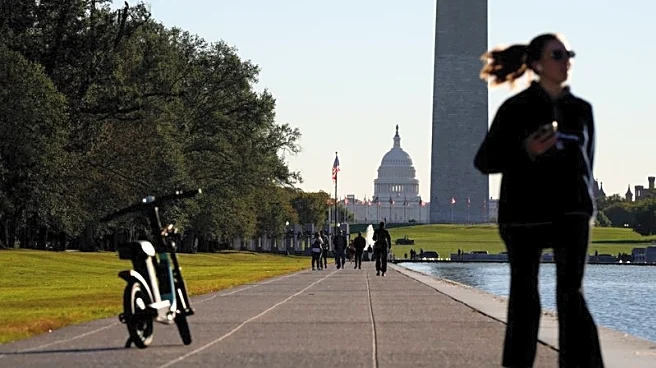What's Happening?
The Economist has released its third annual 'Carrie Bradshaw Index,' which ranks U.S. cities based on their affordability for individuals living alone. Named after the fictional character from 'Sex and
the City,' the index evaluates cities where a person can afford a studio apartment without spending more than 30% of their gross income on rent. The index uses rental data from Zumper to calculate the necessary salary to afford a typical studio apartment in each city. Cities with a 'Bradshaw score' above one are considered affordable, while those below one are deemed unaffordable. This year, the index shows a shift, with several Texas cities like Dallas, Houston, and Austin moving from affordable to unaffordable due to increased demand and an influx of middle-class workers.
Why It's Important?
The findings of the 'Carrie Bradshaw Index' are significant as they highlight the changing dynamics of urban living costs in the U.S. The shift of cities from affordable to unaffordable categories indicates a growing challenge for individuals seeking to live independently in major urban areas. This trend could impact housing policies and economic strategies as cities grapple with balancing development and affordability. The index serves as a tool for policymakers and real estate developers to understand market pressures and potentially guide decisions on housing supply and urban planning. For individuals, it provides insight into where they might feasibly live alone without financial strain.
What's Next?
As rental markets continue to fluctuate, cities may need to address the affordability issue through increased housing development or policy changes. The influx of workers in cities like those in Texas suggests a need for strategic planning to accommodate growing populations without exacerbating housing costs. Stakeholders, including local governments and real estate developers, might explore initiatives to increase affordable housing options or incentivize construction in less populated areas. Monitoring future editions of the 'Carrie Bradshaw Index' could provide further insights into these trends and inform long-term urban planning strategies.
Beyond the Headlines
The index not only reflects economic factors but also cultural shifts in living preferences. As more individuals opt for solo living, cities must adapt to these lifestyle changes by offering diverse housing options. The cultural aspiration of living independently in a vibrant city, as epitomized by the 'Carrie Bradshaw' character, underscores the importance of creating urban environments that support varied living arrangements. This could lead to broader discussions on urban design, community building, and the role of cities in fostering individual lifestyles.












